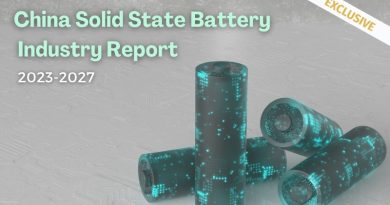BESS Plant Setup – Part 6
Warranty, LTSA and Maintenance for BESS
This article is the sixth and final part of the BESS Plant Setup Series published from June to November 2025 on EVreporter by Rahul Bollini. While Part 5 focused on understanding the parameters of the FAT (factory acceptance test), Part 6 focuses on the important warranty terms, LTSA, and maintenance for BESS. The details mentioned in the warranty terms and the LTSA (long-term service agreement) are crucial to the decision-making process when a customer has finalised the product and is on the verge of placing an order.
Important factors to be noted during warranty period:
- The customer must define the project duration and the number of cycles intended to be used per day and per year. Accordingly, the initial battery sizing and augmentation are planned and agreed upon by both parties. A SoH-based performance warranty can be agreed upon, so the project can proceed smoothly.
- A contract must be signed for the battery operation and maintenance method. A system manual must be provided with detailed instructions.
- The customer must take as much support and guidance from the battery manufacturer as possible during installation of the battery system.
- The battery manufacturer must assign a team to every project, consisting of a team administrator to manage the service team and several engineers for service and technical support. This team is expected to be reachable by phone, email or video conference on short notice. This team is also responsible for planning spares and scheduling preventive checkups and maintenance. It is explained in detail in an LTSA document.
- The battery manufacturer must ensure that only professionally trained personnel perform maintenance of the battery system. All precautions must be taken during maintenance to avoid injuries. No jewellery must be worn during maintenance.
- Many battery manufacturers do not allow full-power operation of the battery system above 45°C and mandate derating the system, which must be considered for projects operating in hot geographies. Similarly, higher-altitude projects require system derating, and if the derated power is insufficient, the battery must be oversized to achieve the required power.
- If the battery system will be idle for a long period, the DC circuit breaker must be turned off to prevent other devices from drawing energy. Also, the battery system must be turned on at least once to check the battery status.
- On-site storage time is defined as the period from the time container is shipped from the factory until it is connected to the grid. Maximum time allowed is documented in the contract.
- A detailed technical agreement is signed between the manufacturer and the customer that outlines the scope of supply, the project’s functioning, a SoH-based performance warranty, and product maintenance technical requirements.
- For battery projects that experience power outages, it is important to have a UPS to power the BMS and fire suppression system (FSS) for a while. This is required when the battery is at a very low state-of-charge (SoC) and there is a power outage situation.
Situations when battery manufacturer does not provide warranty:
- If the system has been stored at the site for more than the agreed-upon time and loses more SoH than anticipated, the project’s SoH-based performance warranty from the manufacturer needs to be renegotiated. In some cases, battery augmentation may be required if too much SoH is lost due to prolonged delays. It is common for projects to be delayed due to permits. Most manufacturers suggest connecting the battery to the grid within 6 months of FAT. Similarly, the SoH-based performance warranty would be renegotiated if DoD use of the project exceeds the agreed amount, or if the buyer fails to maintain the system or operates it differently than agreed in the contract.
- If an individual cell or battery system is allowed to go below undervoltage level beyond a specific time during maintenance, warranty can be voided.
General Maintenance to be Performed for the Project:
- Check for power cable and communication cables for any damage or cuts.
- Check the inlet and outlet of the liquid-cooling unit and ensure there is no blockage. Also, check the exhaust system for any blockage and clean or replace the filter if required.
- Check the fire suppression system functionality for any abnormalities.
- Check that the indicators are in good condition and are functioning as usual.
- Check the status of each plug, fuse and switch for any abnormalities.
- Check whether any components’ temperatures are higher than usual using a thermal imager.
- If SoC errors are noticed during operation, the SoC must be recalibrated.
- Check the humidity and dust levels in the system.
- Perform a thorough test to determine if the system function is normal. Parameters such as power accuracy and power response time must be tested.
- Check for any corrosion of any metal elements.
- Check for any terminal surface that has rusted.
- Check if the emergency stop button is working.
- Perform a shutdown and check if the shutdown signal is normal.
- Check if the warning signs are intact and replace them if they are worn out.
- Check for any loose screws and tighten them.
Part 6 marks the end of BESS Plant Setup series. I will write more about BESS in future editions.
This article was first published in EVreporter Nov 2025 magazine.
About the author

Rahul Bollini, Bollini Energy
Rahul is an R&D expert in Lithium-ion cells with 10 years of experience. He founded Bollini Energy to assist in deep understanding of the characteristics of Lithium-ion cells to EV, BESS, BMS and battery data analytics companies across the globe. Contact | +91-7204957389; bollinienergy@gmail.com.
Also read: BESS Plant Setup – Part 5
Subscribe today for free and stay on top of latest developments in EV domain.






